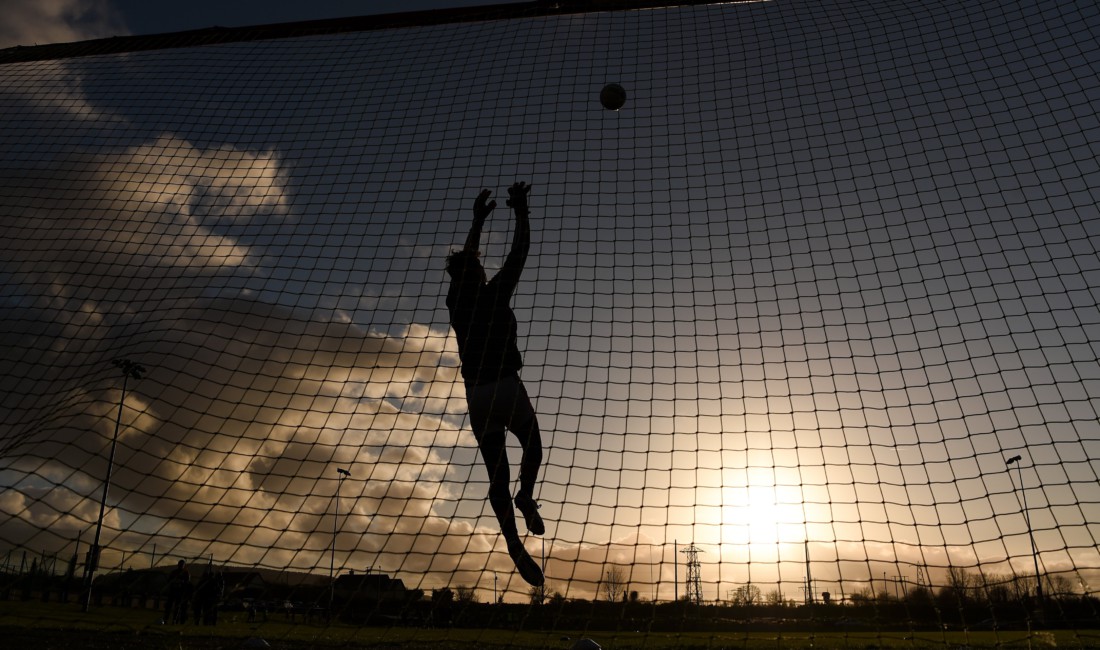THE English word ‘storm’ comes from the Proto-Germanic ‘sturmaz’ which means noise or tumult (chaos). Whenever we understand the origins of the word we can fully relate to the significance of its meaning. Being true to its name, storms are of course chaotic in nature while also having the ability to create mayhem and devastation in their wake.
We are now entering the time of year whenever we encounter stormy weather on a daily basis. Dealing with storms and indeed stormy weather is by no means a new phenomenon in this country and has been something that we certainly have become accustomed to especially at this time of year. It can be a very disruptive and sometimes destructive force for us to deal with and for this reason it is important to give it the respect it deserves.
From a sporting context, dealing with the effects of stormy weather can be a nightmare especially in terms of quality and ability to perform tasks to an expected standard consistently. For goalkeepers in particular, playing in stormy conditions can be extremely problematic resulting, on occasion, in catastrophic consequences. These can then have a detrimental effect on the goalkeeper’s confidence, causing them to retreat into themselves whenever playing in similar conditions – freeze or underperform.
Whenever confidence is lost the best way to regain that confidence is by doing. If you are a goalkeeper who does have any sort of fear, no matter how slight, of playing in stormy conditions then what you must do is face that fear. Fear is not real. Simply put, Fear is the product of thoughts that are created by you. Danger is very real, but Fear is a choice.
To perform in competition conditions to an expected standard on a consistent basis, it is vital for any goalkeeper to replicate the conditions that they will be playing in. With this in mind, to gain more confidence playing in stormy weather, it is then important for the goalkeeper to train in similar stormy weather, under pressure, in competition conditions consistently. This means the goalkeeper must prepare sessions that can be completed at the drop of a hat’s notice when the weather does take a turn for the worse. When stormy weather does occur embrace it and see it both as a challenge and an opportunity to improve your goalkeeping ability.
Think about what areas of your game you feel less confident in whenever the weather turns stormy (strong winds and heavy rain). Then create drills to be included into a session for when it is stormy outside. On a day that does present itself as stormy use your predetermined session to gain valuable experience playing in these conditions.
DISCLAIMER TIME
Please ensure you are sensible in the type of weather you decide to go out and train in. Follow all advice and weather warnings that have been advised by MET Offices. Always ensure that if you are going to go and train in stormy weather that you are wearing suitable clothing and have notified someone of where you are and what time you are expected to be back at.
Some of the most common things that goalkeepers tend to get nervy about in stormy weather are fielding and dealing with high balls, restarts, collecting the ball under pressure or contact, balls skimming off wet grass but generally it is the awkward flight of the ball that causes the most apprehension.
Once you have highlighted the areas that cause you most distress and have created a training plan, it is also important to adjust your mindset for this situation. Environmental factors are ones that are outside of the goalkeeper’s control and ones that the goalkeeper should forget about whenever they are performing during training and games.
For example, fielding or dealing with a high ball in stormy conditions is still the same as with a high ball in perfect conditions. The techniques you will use and the mindset you will present are the same. Granted that the level of difficulty may be higher, but this only means that your levels of concentration/focus will also need to increase.
It is the same for taking restarts in stormy weather. I always coach my goalkeepers to understand that kicking with the wind is exactly the same process and principles as kicking against the wind. What you must understand is that when you are kicking against the wind, the amount of range you may have will have decreased but there are ways in which you can use, manipulate or trick the wind when kicking against it.
The most important things to remember when kicking both with and against the wind are your kicking principles and the four stages of your kick. Whenever you stick to your kicking processes, the majority of times they will get you through in adverse weather conditions.
Unfavourable weather should not be feared by any goalkeeper. It is a normal response and is understandable for any goalkeeper to feel uneasy when the weather is really bad.
All goalkeepers can relate to this plight but by seeing this type of weather as a challenge and an opportunity to progress, you can eradicate this unnecessary fear and in turn further your goalkeeping ability. It is well said that experience is the best teacher, so with this in mind don’t allow the storm to break you and become a Storm Breaker.
Email:pmgoalkeeping@hotmail.com
Facebook: @MSoG11
Twitter: @MorSchGk
Receive quality journalism wherever you are, on any device. Keep up to date from the comfort of your own home with a digital subscription.
Any time | Any place | Anywhere












